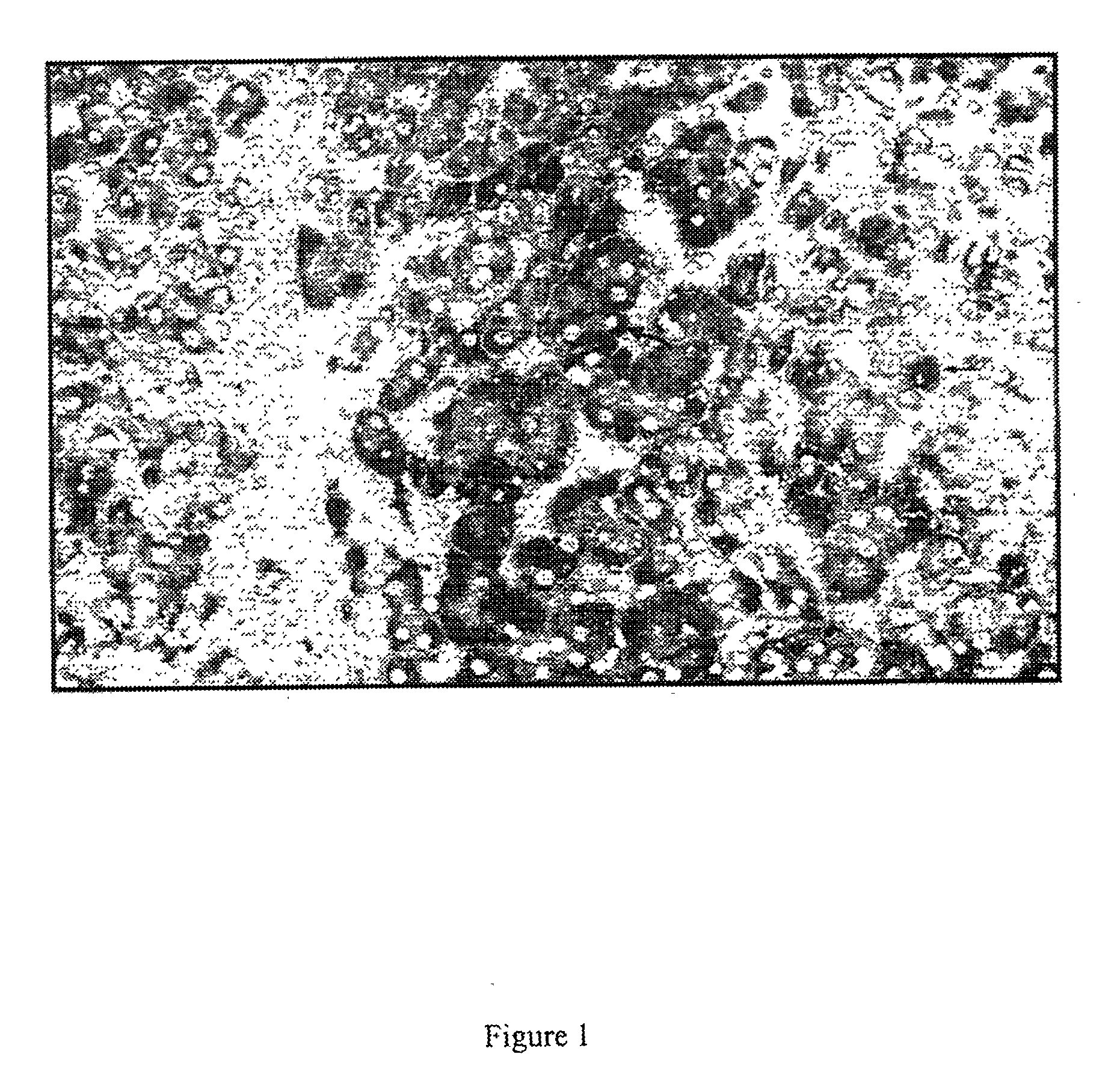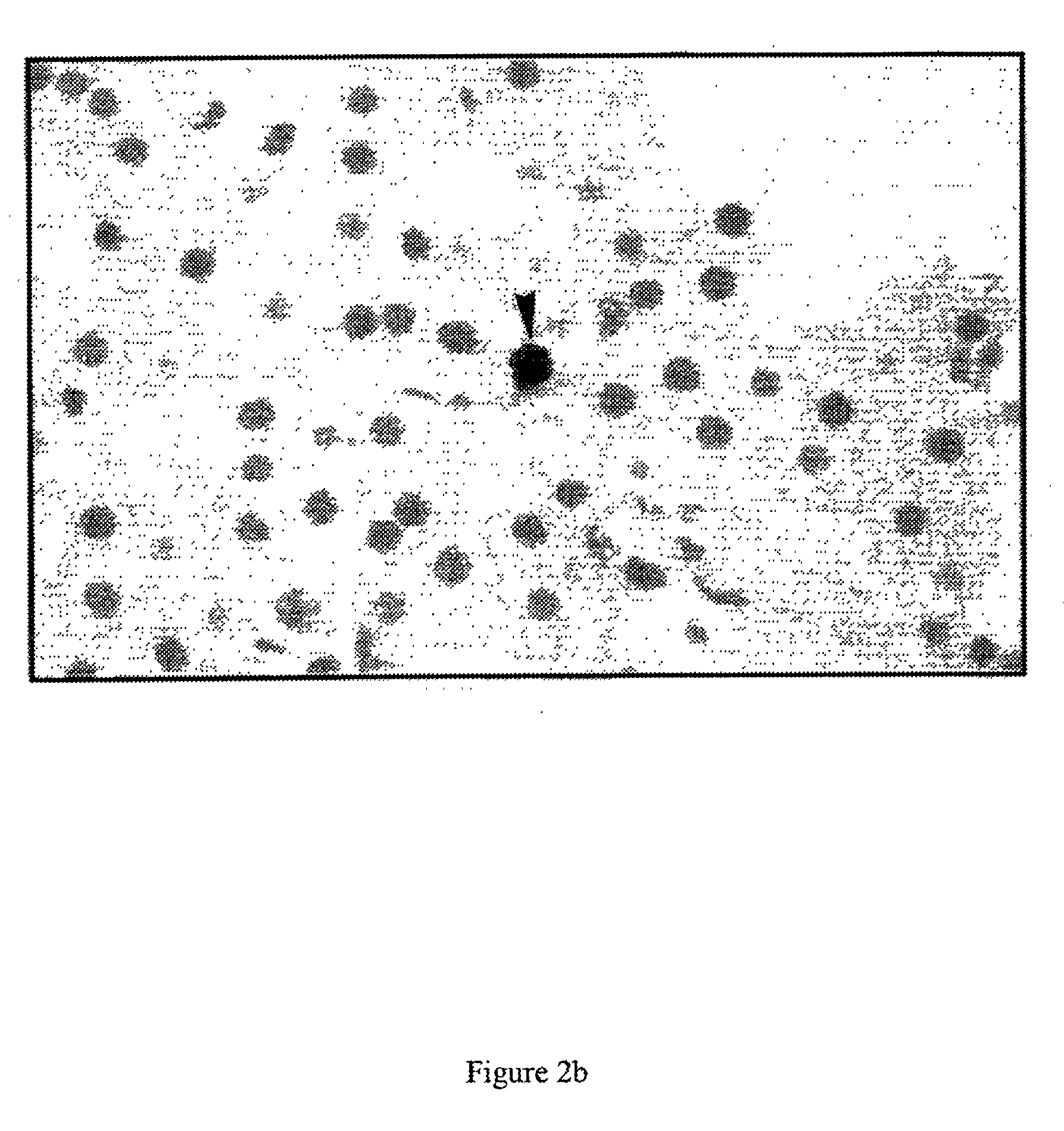Epitopes in viral envelope proteins and specific antibodies directed against these epitopes: use for detection of HCV viral antigen in host tissue
a technology of hcv and specific antibodies, which is applied in the field of hcv infection and hcv virus antigen detection, can solve the problems of false positive reactivity, cumbersome rna detection in cells or tissues, and major health problems of hcv infection
- Summary
- Abstract
- Description
- Claims
- Application Information
AI Technical Summary
Benefits of technology
Problems solved by technology
Method used
Image
Examples
example 1
Generation of Monoclonal Antibodies Against E1 and E2
[0056] Mice were immunised with truncated versions of E1 (aa 192-326) and E2 (aa 384-673), expressed by recombinant vaccinia virus, as described in PCT / EP 95 / 03031 to Maertens et al. After immunisation splenocytes of the mice were fused with a myeloma cell line. Resulting hybridomas secreting specific antibodies for E1 or E2 were selected by means of ELISA.
example 2
Selection of Monoclonal Antibodies
[0057] A large series (25 in total, of which 14 in detail; the latter can be obtained from Innogenetics NV, Gent, Belgium) of monoclonals directed against E1 or E2 was evaluated for staining of native HCV antigen in liver biopsies of HCV patients and controls (see below). Staining was performed either on cryosections or on formaldehyde fixed biopsies (for protocols, see figure legends). Only three monoclonal antibodies revealed a clear and specific staining. All other monoclonal antibodies either gave no or very weak staining, or showed non-specific staining. Remarkably, two different antigen staining patterns were noticed. Monoclonal IGH 222, directed against E2, clearly stained hepatocytes (FIG. 1), while IGH 207 and IGH 210, directed against E1, stained lymphocytes infiltrating in the liver (FIGS. 2a and 2b). IGH 207 also stained hepatocytes, but to a weaker degree than IGH 222 (compare FIGS. 1 and 2a). This staining pattern was confirmed on a se...
example 3
Identification of Monoclonal Antibodies Allowing Detection of Viral Envelope Antigen in Peripheral Blood Cells
[0058] The finding that lymphocyte infiltrates in the liver can be stained for HCV envelope antigens prompted us to look also at peripheral blood mononuclear cells. In order to allow intracellular staining, peripheral blood cells were permeabilised with saponin, allowed thereafter to react with the monoclonal antibodies IGH 201 or 207 (directed against E1 and showing weak and strong positivity on the liver biopsies, respectively). Finally, reactivity was checked on a fluorescent cell sorter using secondary FITC-labelled antibodies. IGH 207, which stained already the lymphocyte infiltrates in the liver, showed a high specificity. With this monoclonal, almost no background staining was detected, and 4 out of 5 patients clearly stained positive (FIG. 3). The second monoclonal, IGH 201 (binding to SEQ ID 29; ECACC accession number: 98031216) which is also directed against E1, yi...
PUM
| Property | Measurement | Unit |
|---|---|---|
| thick | aaaaa | aaaaa |
| pH | aaaaa | aaaaa |
| concentration | aaaaa | aaaaa |
Abstract
Description
Claims
Application Information
 Login to View More
Login to View More - R&D
- Intellectual Property
- Life Sciences
- Materials
- Tech Scout
- Unparalleled Data Quality
- Higher Quality Content
- 60% Fewer Hallucinations
Browse by: Latest US Patents, China's latest patents, Technical Efficacy Thesaurus, Application Domain, Technology Topic, Popular Technical Reports.
© 2025 PatSnap. All rights reserved.Legal|Privacy policy|Modern Slavery Act Transparency Statement|Sitemap|About US| Contact US: help@patsnap.com



